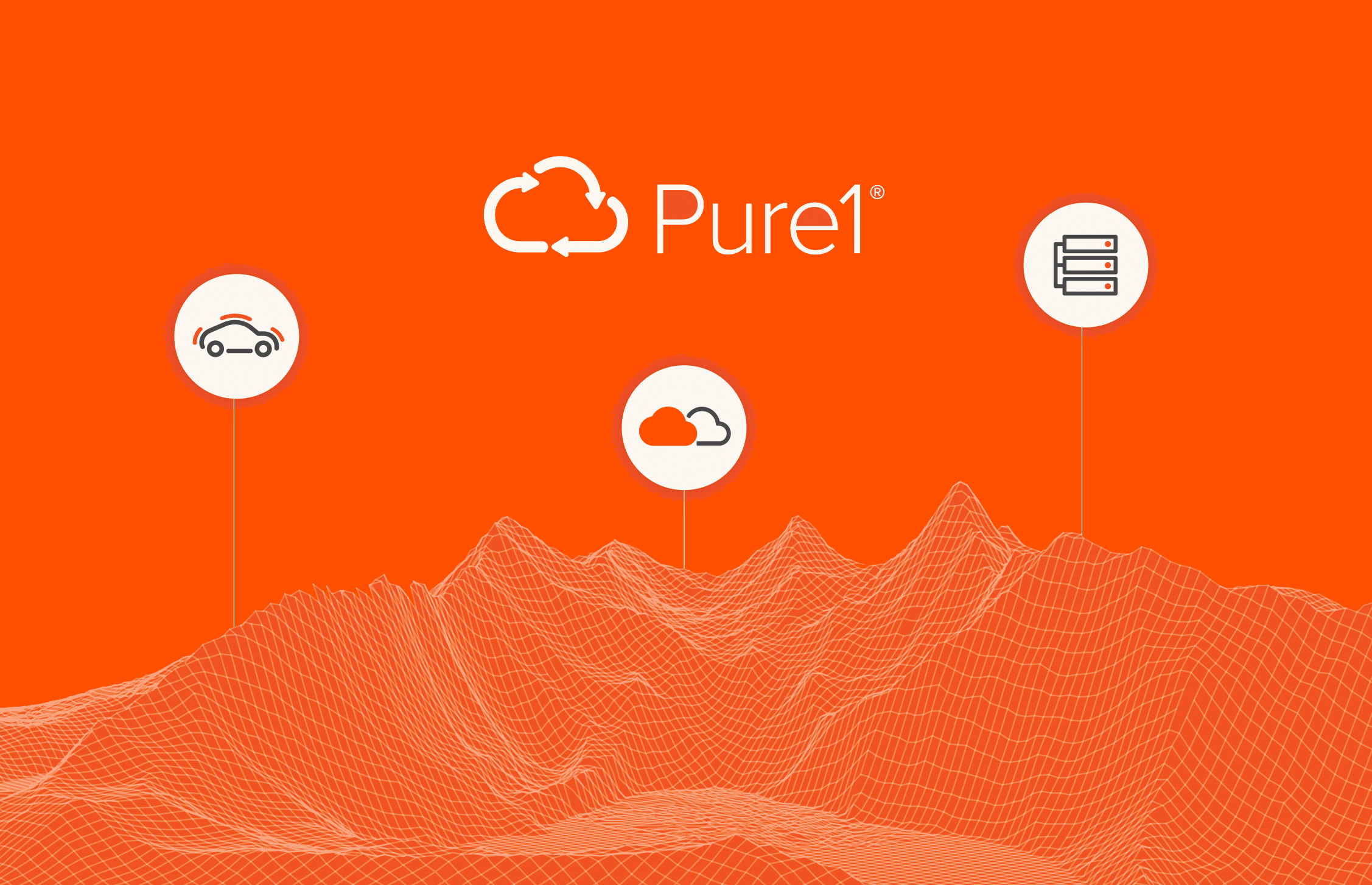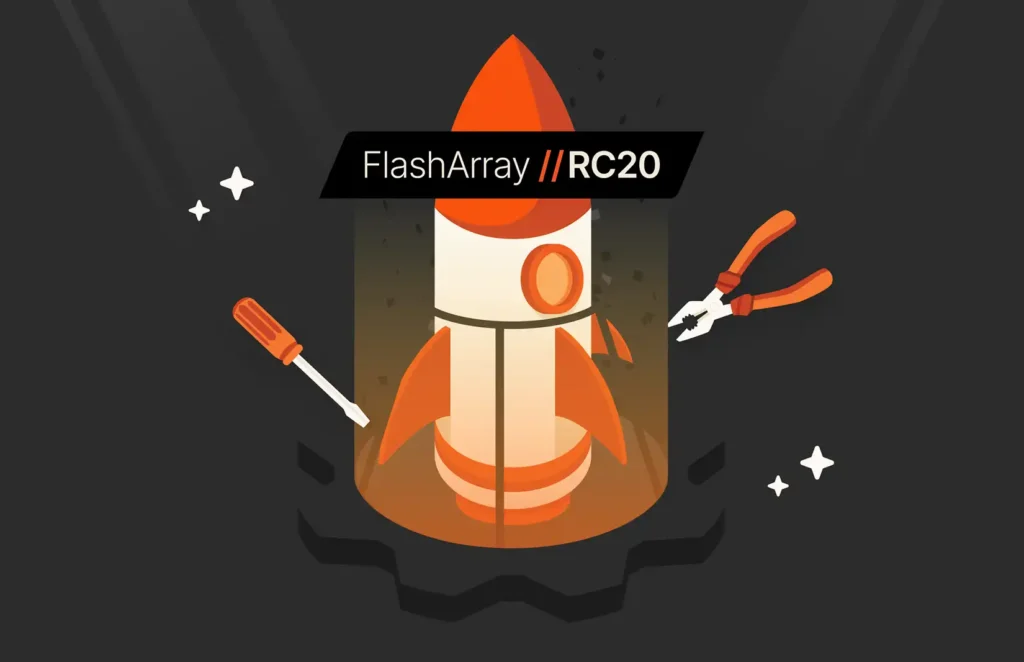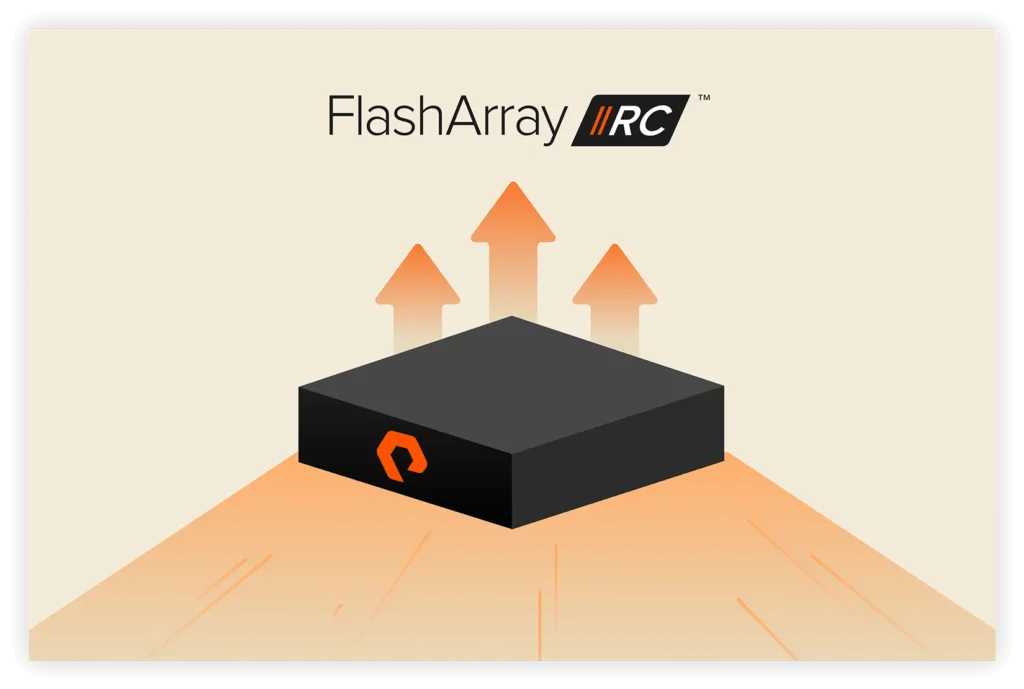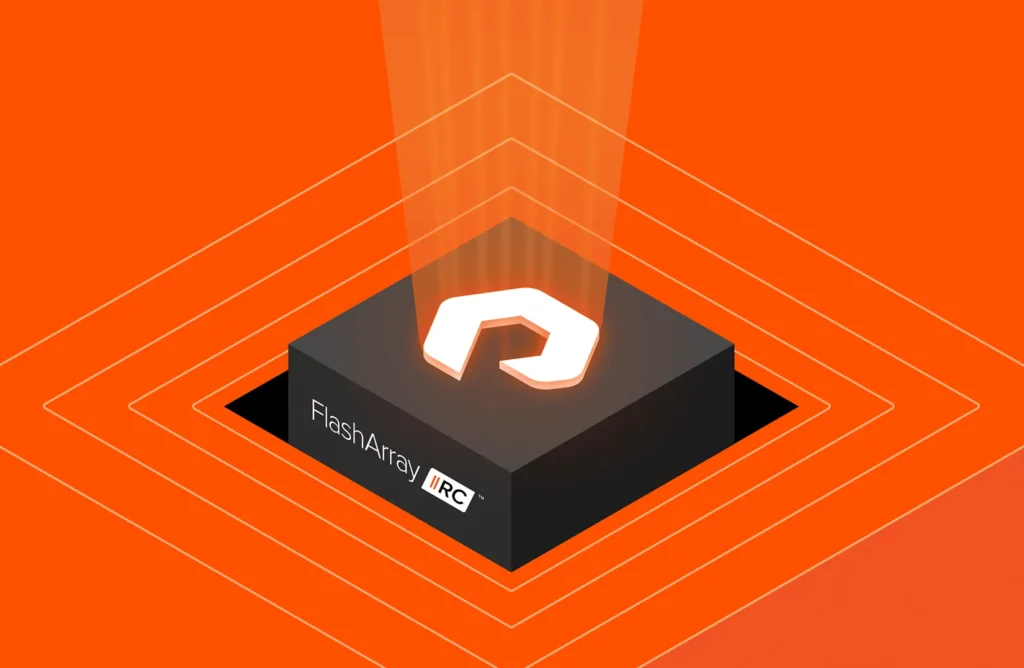Summary
This blog explores how Pure1® Meta Workload Simulations help organizations optimize storage performance, now updated with September 2024 enhancements, including AI-powered workload forecasting, upgrade simulations for FlashArray//XL, and multi-array workload modeling for hybrid environments.
Over the last few years, we’ve introduced machine learning models to predict load and capacity, as well as simulate hardware changes in Pure1®. Hundreds of customers have upgraded with confidence and sleep better at night knowing that our models are working hard to ensure we can forecast the future. Together, these two features help customers forecast growth in their environment, and simulate the impact of changing hardware components on both load and capacity.
But we knew our work wasn’t over. A customer’s storage environment isn’t static and new requirements come in every day. Our models can predict the best trajectory of the future given past data, but we couldn’t account for changes in external requirements. These changes may include, for example, a need to double an Oracle workload or support five times the number of VDI users. Historically, we couldn’t help customers find the best place for a workload when they have multiple arrays so as to optimize the overall load and capacity used. To solve these problems and introduce radical simplicity to storage management, we are launching workload simulations within the Workload Planner.
At Pure, we always strive for simplicity, and with that in mind we are introducing a new and improved look to the Workload Planner. On the landing page of Pure1’s Planning section, you can see a star map that shows the projected load and capacity for all your arrays at a glance, allowing you to quickly hone-in on which arrays need your attention today. The time window for projection is adjustable from one month to one year giving you the ability to switch between everyday tactical decisions to long term strategy. You can also see all the simulations you have performed on each array in the simulation summary window.
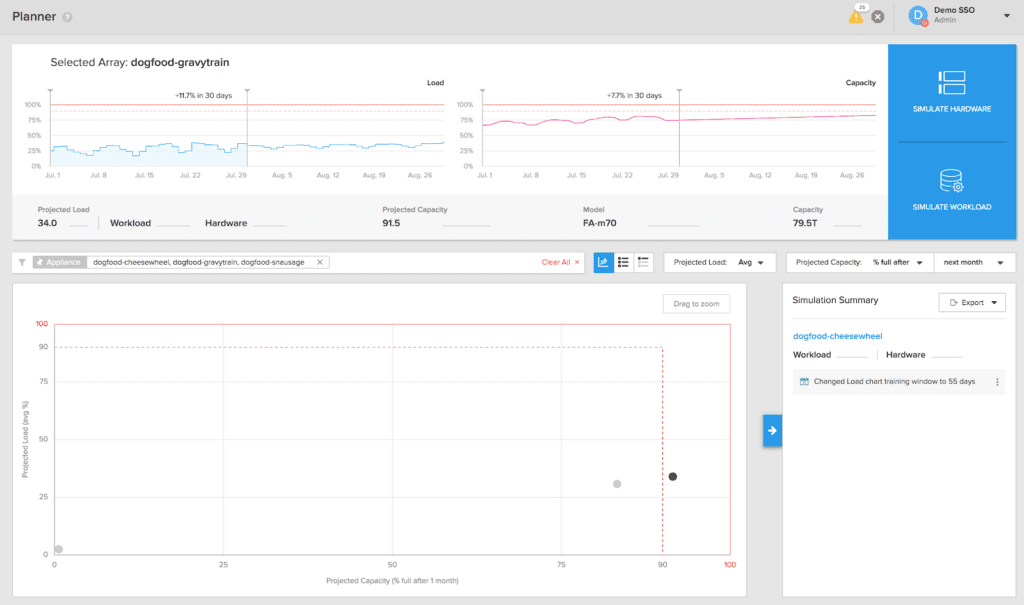
The new features can be found under the Simulate Workload button. In the overlay, you can see all the volumes on this array, along with performance metrics like bandwidth, latency, and IOPS. In addition, we’ve analyzed capacity data to come with a measure of Estimated Space used by each volume. We believe this will help customers feel a lot more confident migrating capacity than before. You can sort by any of these metrics over the time period and find your heaviest hitters to focus on.
Once you’ve selected a subset of or all volumes to simulate, you can perform three operations on them.
1) Scale. You can simulate scaling a workload represented by any set of volumes up or down based on a multiplier. Scaling down to 0.5x means half the workload and 2x being double the workload. This multiplier affects both the performance and capacity utilized by the set of volumes. Once you hit apply, you can see the effects of your changes on the array’s projections.
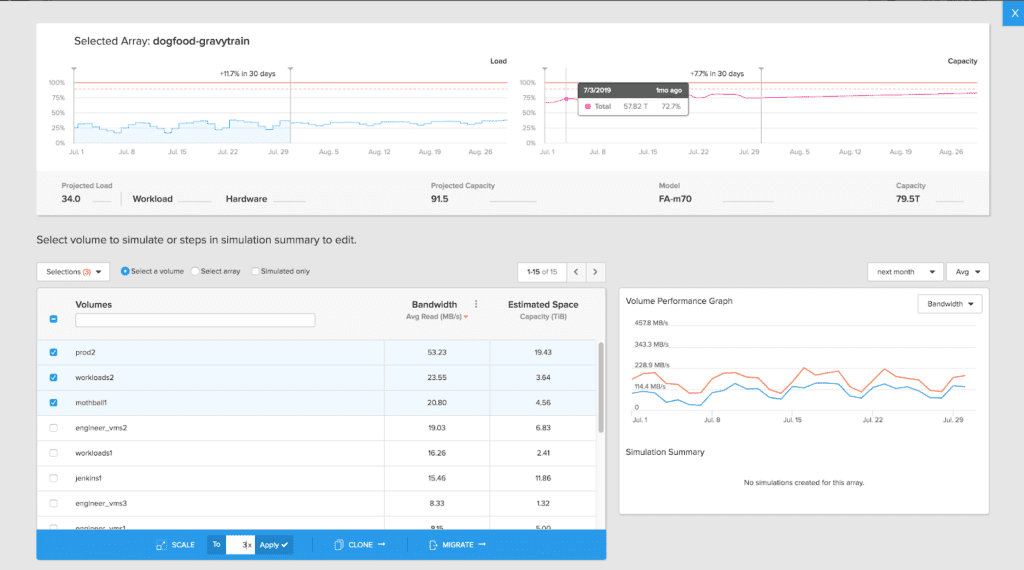
2) Clone. The second operation you can simulate is cloning a set of volumes. Once you click clone, you will be directed to a second page where you can select which arrays you’d like to clone the workload to. Here you can select multiple target arrays to clone to. Once you hit apply, the models will return the change in workload and capacity on each of the target arrays.
3) Migrate. The last operation you can simulate is migrating a set of volumes. Once you hit apply, the models will return the change in workload and capacity on each of the target arrays, as well as the reduction on the source. You can use the multi-select option to pick the best place to move the workload.
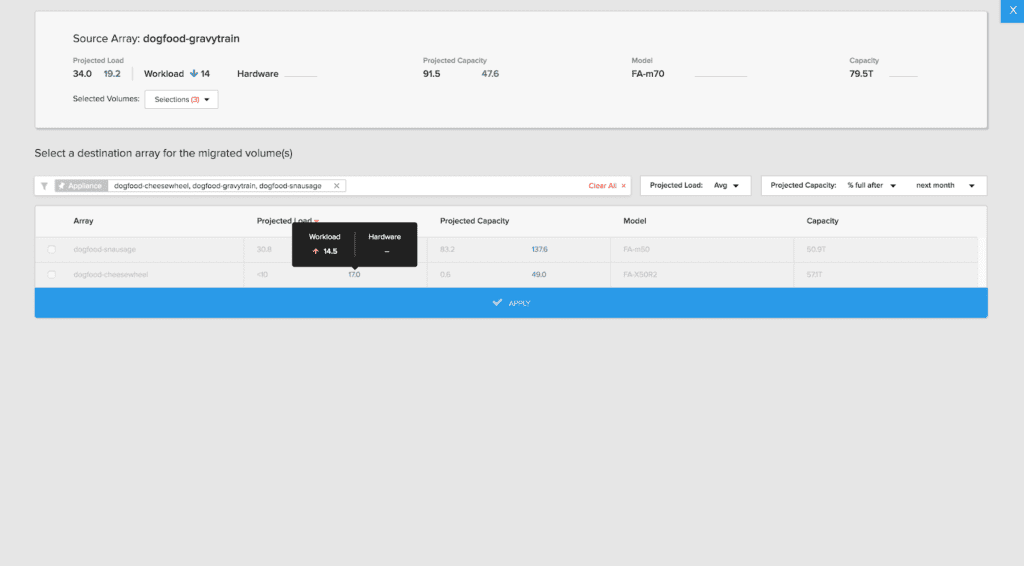
Independently, these operations are very powerful. Together, even more so. You can migrate scaled volumes, clone volumes to two different arrays, and scale them differently on each, etc.
The workload simulations work seamlessly with the hardware simulations. You can see the break up of your simulated load by change due to workload and change due to hardware upgrades.
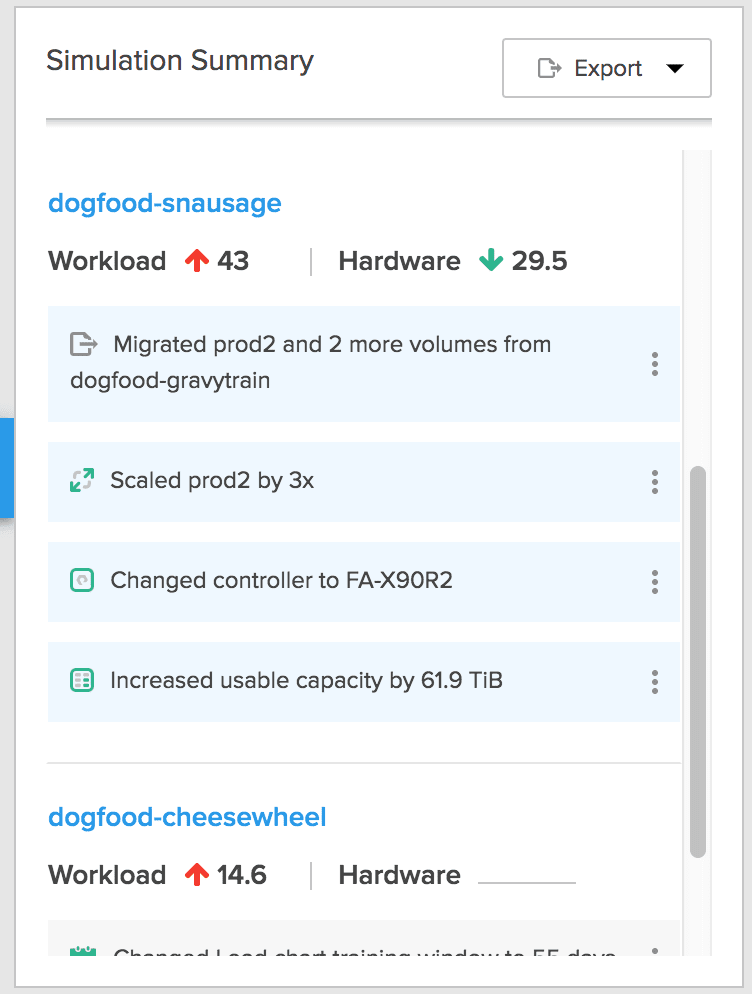
Every infrastructure admin needs to do planning and sizing, and we’re here to bring Pure simplicity to it. All the while helping our customers sleep better at night, knowing that Pure1 is looking out for them.
We have a lot more in store. We want to learn from the types of simulations our customers do and adapt the tool to improve those. We want to suggest the optimal placement for a cloned or migrated workload in order to maximize performance and capacity utilization. We want to suggest the best hardware to run these sets of workloads on. We want to provide these auto-placement services behind a REST API to integrate with tools, in addition to driving these insights into actions straight from Pure1. If you can’t tell, I’m excited about the potential that this unlocks and the value we will be able to bring to our customers.
Latest Enhancements to Pure1® Meta Workload Simulations (September 2024 Update)
Since the initial introduction of Pure1® Meta Workload Simulations, Pure Storage has continuously enhanced its capabilities to provide deeper insights into workload performance and infrastructure planning. The September 2024 update brings significant improvements, enabling organizations to make more informed decisions when upgrading and optimizing their storage environments.
1. Upgrade Simulations for FlashArray//X to FlashArray//XL
- Organizations can now simulate the impact of upgrading from FlashArray//X to FlashArray//XL, helping them determine whether the newer model aligns with their performance and capacity needs.
- This feature allows IT teams to model how their workloads would perform on the FlashArray//XL platform, ensuring seamless scaling without disruptions.
2. AI-Powered Workload Forecasting
- The AI-driven prediction engine in Pure1® has been refined to offer more accurate workload forecasts, analyzing historical trends to anticipate future performance requirements.
- This enhancement helps businesses optimize their storage investments, preventing overprovisioning while ensuring they have the capacity required to meet demand.
3. Real-Time Performance Comparisons
- Users can now compare real-time workload data across different storage models, gaining insights into potential performance improvements before committing to an upgrade.
- This update provides visualizations that illustrate how IOPS, latency, and throughput would be impacted across different FlashArray models.
4. Expanded Multi-Array Simulation Capabilities
- IT teams managing hybrid or multi-cloud deployments can now model workload distribution across multiple FlashArrays or even across on-premises and Pure Cloud Block Store™ environments.
- This allows organizations to simulate data movement strategies for disaster recovery, high availability, and cost optimization.
5. Enhanced Integration with Pure1® Storage Planning Tools
- Pure1® now integrates Workload Simulations with Pure1 Storage Planner, making it easier to plan capacity expansions, upgrades, and workload rebalancing without disrupting operations.
- This integration provides a unified view of capacity trends, projected growth, and potential bottlenecks, ensuring proactive resource planning.
Why These Updates Matter
With these 2024 enhancements, organizations using Pure1® Meta Workload Simulations can now take a data-driven approach to storage optimization and upgrades. Whether planning a transition to FlashArray//XL, optimizing workload distribution, or forecasting future resource needs, these new capabilities provide actionable insights that reduce risk, improve efficiency, and enhance performance.
Head on over to Pure1® to check it out. To learn more, see the resources below or contact Pure Storage.
- Visit the Pure1 webpage
- Watch this Pure1 demo
- Watch this talk I gave on machine learning with Pure1 Meta™
